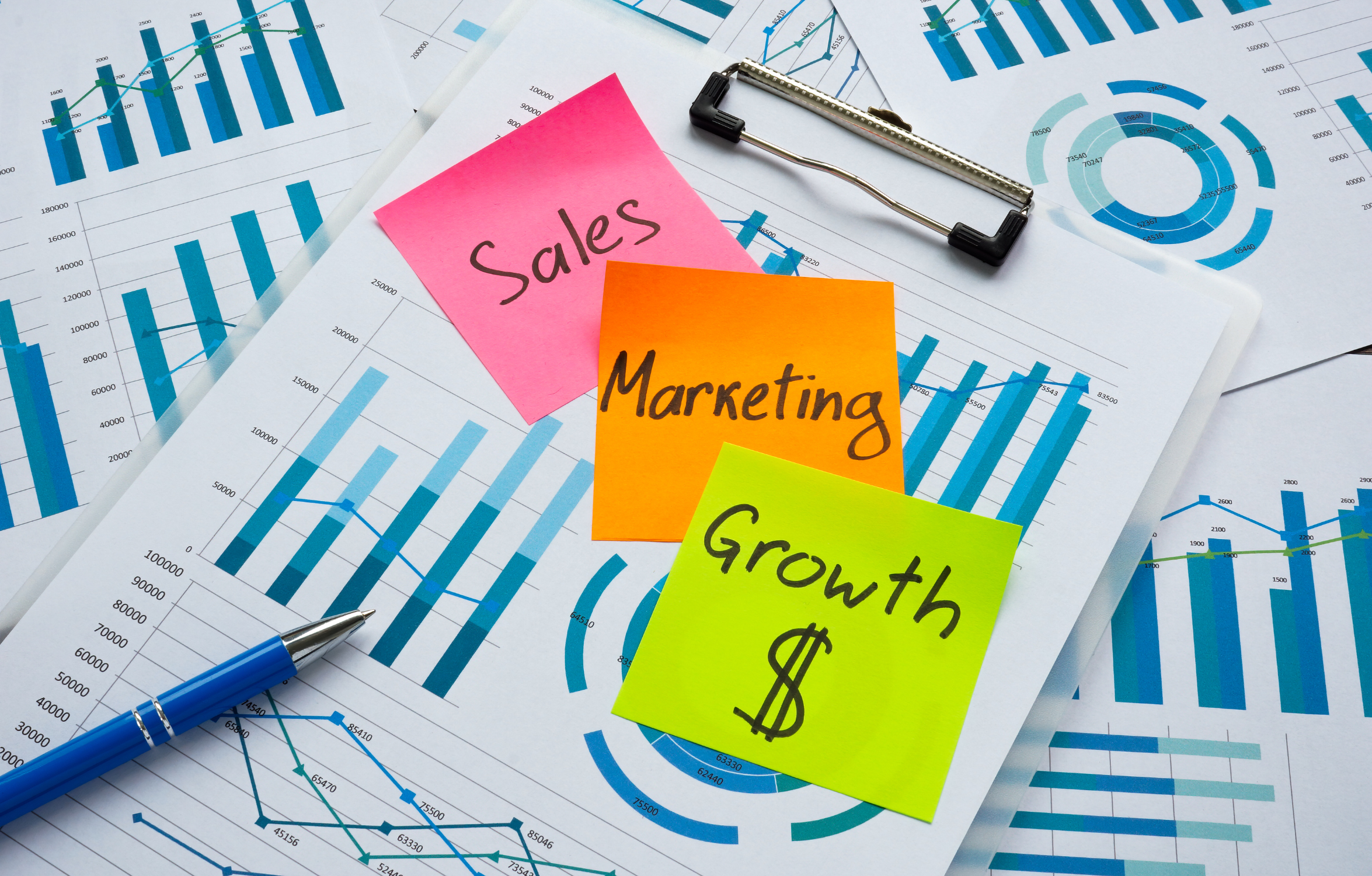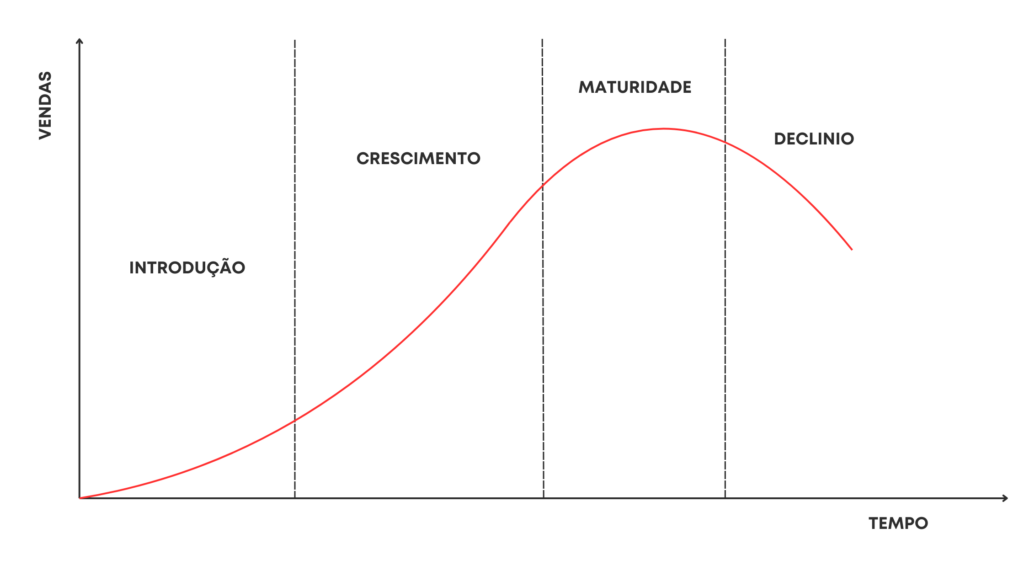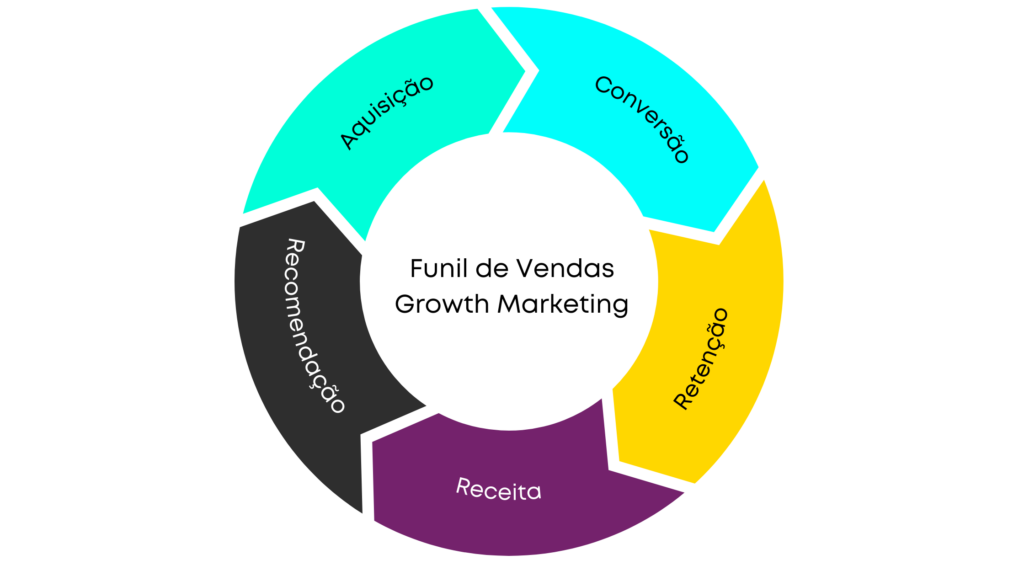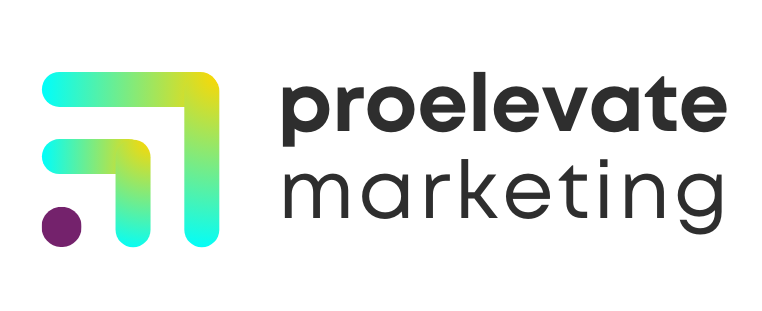
Growth Marketing: what it is and how to implement it in your company
The evolution of business landscape has brought new ways of consuming and acquiring products and services. With the expansion of the Internet and the emergence of Web 2.0, information has become more accessible, simplifying and at the same time complicating customer acquisition due to the vast availability of communication channels.
Faced with this dynamic scenario, the Growth MarketingGrowth Marketing, a revolutionary approach focussed on the continuous growth of companies. Find out in this article what Growth Marketing is and how it can make a difference in boosting your company's sales.
Read on to find out more:
- What is Growth Marketing?
- What is the difference between Growth Marketing and Traditional Marketing?
- How to create a Growth Marketing strategy
- Tools you can use to develop your Growth Marketing strategy
What does Growth mean?
Before we dive into the concept of Growth Marketing in the business context, it's crucial to understand that every product or service here's one life cycle divided into four main stages:
- IntroductionThis is the initial phase where the product is launched on the market and is still little known. During this period, significant investments are made to increase the visibility and awareness of the product.
- GrowthAs the product gains recognition, there is an increase in sales and consequently in profits.
- Maturity: Here, the product reached its peak in sales.
- DeclineThe product loses its novelty appeal and sales begin to fall.

The duration of each phase varies according to the investments made, customer satisfaction, the company's reputation and the marketing and communication strategies implemented.
But how does all this relate to Growth Marketing?
The link is direct and essential: all companies seek to extend the growth phase as long as possible.
"Ah, but I can extend the maturity phase".
Better not, and here's why.
Maturity, although profitable, indicates a plateau where there is no more growth, making it less attractive. In the concept of GrowthThe focus is not just on reaching this stage, but on prolong the growth phase.
Imagine you own a broom shop. The goal, from a Growth perspective, is to ensure that your customers remain interested in your brooms, keeping sales constantly on the rise and stable.
Thus, adopting the concept of Growth means implementing a set of strategies that keep a product in the growth phase for as long as possible.
But knowing this notion of Growth is not enough for companies. They also need to know how to create, manage and maintain the desired growth, as well as maximise it. That's why the concept of Growth was joined by that of Hacking.
Growth Hacking
Growth Hacking consists of a set of marketing strategies focused on accelerated growth, mainly adopted by startups to quickly increase your recipes. These strategies are designed to be agile and based on continuous experimentationexploring data e technology to achieve significant results.
The professional behind this approach is known as Growth Hacker. This marketing expert combines the skills of programme with market techniques to identify growth opportunities quickly and effectively. Utilising detailed analyses and creativity to implement tactics that drive growth, Growth Hacker adjusts and optimises campaigns and products in real time, guided by consumer responses and behaviour.
What is Growth Marketing?
Now that you know what Growth is and what Hacking is, we can finally talk about what Growth Marketing is.
Growth Marketing is a branch of Marketing that will then focus on maintaining and maximising the constant growth of a product or service. Instead of accepting its maturity and decline, Growth Marketing will devise a strategy, prepare actions and spend funds so that the product doesn't stop selling.
To achieve this, the Growth Marketing Manager's mindset must always be up to date with the latest market news and always listen to their customers. Because it's the customers themselves who will tell the company what to improve in its business.
What is the difference between Growth Marketing and Traditional Marketing?
The main difference between Growth Marketing and Traditional MarketingI live in focus of your actions. While traditional marketing focuses on established tactics and achieving predictable results, Growth Marketing invests in innovation, data analysis and continuous testing to drive the continuous growth of goods or services and reach ever higher levels.
Traditional marketing offers the advantage of lower riskusing proven and efficient methods. On the other hand, the riskier approaches adopted by Growth Marketing can generate superior results.
A good practice would be to combine already validated Growth Marketing strategies with personalised innovations, boosting results and adapting to the specific needs of your audience. Remember: there is no single right strategy. Whether it's Growth or Traditional, the important thing is that the approach you choose is aligned with your company's objectives and target audience.
Sales funnel
In Growth Marketing, the strategy concentrates intensely on developing the sales funnelThe journey that transforms a simple visitor in a customer. This funnel is nothing that the customer goes through alone; it is essential that the marketing manager accompanies this journey, as planned in the business strategy.
The sales funnel can be explained by several stages:
- Top of the funnelHere, the potential customer, still a visitor, begins to have some doubts or interests about the market.
- Middle of the funnelAt this stage, the lead already recognises their problem and is looking for solutions.
- Bottom of the funnel: The lead is ready to act and buy.
Another perspective divides the funnel by the customer's mental stage or actions during the journey:
- Discovery: The consumer finds a post about your business on a social network.
- Recognition: He recognises he has a problem and visits your website for more information.
- Decision: After evaluating the options, he decides to make the purchase.
- ActionThe purchase is made and the lead becomes a customer.
In Growth Marketing, after the sale, the process doesn't end. It seeks to take advantage of ongoing opportunities to engage the customer, offering promotions, asking for feedback, providing useful tips and encouraging the customer to promote your business.
The Growth Marketing funnel includes the following stages:
- Acquisition: Maximise business visibility.
- Conversion: Turn leads into customers with an excellent first experience on the site.
- Retention: Keep the customer engaged through varied content and constant interaction.
- Revenue: Promote additional purchases or long-term subscriptions.
- Recommendation: Encourage customers to recommend your business, attracting new leads.
In this way, the Growth Marketing funnel creates a self-powered cycleadapted to the particularities of the business and with efficient resources.

Conversion and retention before acquisition
The importance of the first consumer experience is fundamental to Growth Marketing, focusing primarily on optimising conversion and retention.
After all, what's the point of having lots of traffic if you can't convert those visitors into buyers?
This would result in a waste of resources, energy and effort.
Therefore, when implementing your Growth Marketing strategy, it is essential to prioritise improving these initial stages to ensure a better return on investment.
The benefits of Growth Marketing
Both Growth Marketing and Growth Hacking offer significant advantages for companies. A well-defined strategy and the allocation of adequate financial, human and tool resources can generate an exponential return on investment.
Increasing the value of the customer cycle
The value of the customer cycle is a metric that indicates the value that a buyer can bring to your company during your relationship. Knowing this data allows you to make informed decisions about the actions to be taken in your marketing strategy.
Precisely because you turn the sales funnel into a self-feeding cycle rather than a line with a beginning and an end, the value of your customers' cycle increases.
Here's an example of a brand that sells cosmetics (e-commerce) and Alice, who is interested in this type of product and especially this brand for X and Y reasons.
- Alice orders a body cream via the brand's website. The purchase process is easy and payment is secure.
- Alice receives confirmation of the parcel by email. A few days later it arrives in the post and the same day she receives an email saying that the parcel has been delivered.
- Three days later, an email asks Alice for feedback on the product purchase process.
- The following week, Alice receives a newsletter giving her advice and ideas on how to look after her own skin, with or without the brand's products. She will receive content like this every one to two weeks.
- After two months of using the product, Alice receives an e-mail asking if the cream has given her the results she expected. If she answers the questionnaire, she gets a 15% reduction on her next order. Alice answers the questionnaire and then receives the promotional code.
- Satisfied with a positive experience with both the product and the service, Alice takes advantage of the offer and makes another purchase.
- Over time, the brand continues to nurture this relationship, sending relevant content, exclusive promotions and even alerts about new launches that match Alice's interests.
- As a result, Alice not only continues to buy regularly, but also becomes a brand advocate, recommending the products to friends and family. This cycle of repeat purchases and recommendations significantly increases the value of the customer lifecycle, generating a much higher return on investment for the company.
Cost reduction
In addition to increasing the value of the consumer lifecycle, Growth Marketing can also help to reduce the customer acquisition costs (CAC). By focussing on retention and conversion, the need to constantly attract new buyers is reduced. As existing customers are more likely to make additional purchases and recommend the brand, the costs associated with advertising and prospecting for new buyers decrease. This means that the company can invest less in expensive acquisition campaigns and more in actions that strengthen the relationship with the current target audience.
How to create a Growth Marketing strategy?
Know your target audience
Understand the needs, desires and behaviours of your target audience. Carry out market research, analyse demographic data and create detailed personas that will guide your campaigns.
Work your funnel
Map each stage of the journey customer and identify optimisation opportunities. Focus on conversion and retention from the outset, ensuring that every visitor has an excellent experience.
Select your communication channels
Choose the most effective channels to reach your audience. This can include digital marketing (SEO, social media, email marketing) and offline strategies, depending on the preferences of your target audience.
Create lasting relationships
Invest in building long-term relationships with your customers. Offer valuable content, dedicated support e personalised experiences that keep them engaged.
Keep in touch
Use emails, social networks and other tools to maintain regular communication with your users or buyers. Remember to be relevant and useful in every interaction.
Satisfactory customer service
Ensure that your customers have access to quality service, capable of resolving problems quickly and increasing overall satisfaction.
Make the customer a promoter of your business
Encourage the recommendation of your products or services. Offer referral programmes, discounts for referrals or create campaigns that encourage word of mouth.
Analyse data and metrics
Constantly monitor the performance of your strategies. Use data analysis tools to understand what works and what needs to be adjusted.
Automate with tools
Use automation tools to make your operations more efficient. This includes email automation, CRM, and marketing devices that save time and improve effectiveness.
Essential Growth Marketing tools
Analysing data
Devices such as Google Analytics e Mixpanel help monitor user behaviour, identify points of friction in the sales funnel and optimise marketing campaigns.
Understanding consumer behaviour
Hotjar e Crazy Egg provide insights into how visitors interact with your site, allowing for adjustments to improve the user experience.
Automate as much as possible
Platforms such as HubSpot, ActiveCampaign e Mailchimp allow you to automate email campaigns, segment leads and nurture relationships with buyers efficiently. There are also more advanced automation solutions such as Zapier and Make, which allow you to move the same information between applications.
—-
Growth marketing is not just a fad, but an essential strategic approach for companies looking to grow in a sustainable and scalable way in a competitive environment. By adopting growth marketing, your company not only maximises the potential for continuous growth, but also develops a mindset geared towards innovation, experimentation and constant optimisation.
Unlike traditional marketing, which often focuses on established methods, Growth Marketing opens doors to new opportunities, allowing you to quickly test, learn and adjust your strategies to achieve superior results. From creating an efficient funnel to increasing the value of the consumer lifecycle, growth marketing practices help turn every stage of the buyer's journey into a growth opportunity.
By implementing the tactics discussed in this article, such as getting to know your target audience in depth, working the funnel, and using automation and data analysis tools, you'll be well placed to not only increase your commercial transactions, but also to build a lasting relationship with your buyers. In the end, the real power of Growth Marketing lies in its ability to adapt to market changes and grow continuously, keeping your company at the forefront of success.

